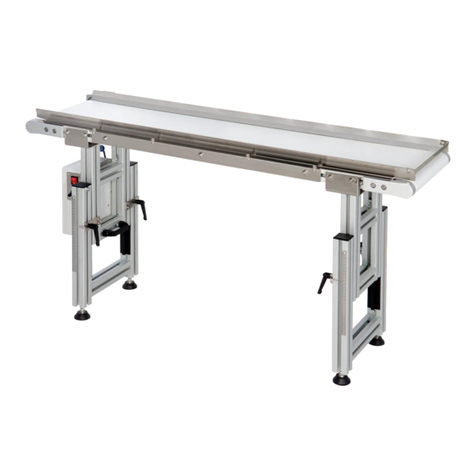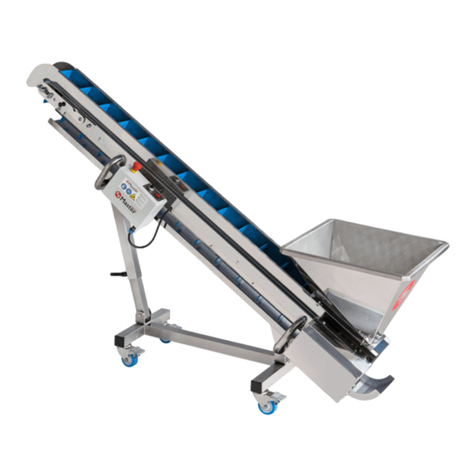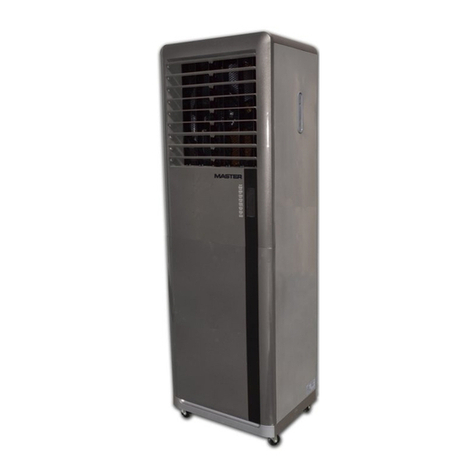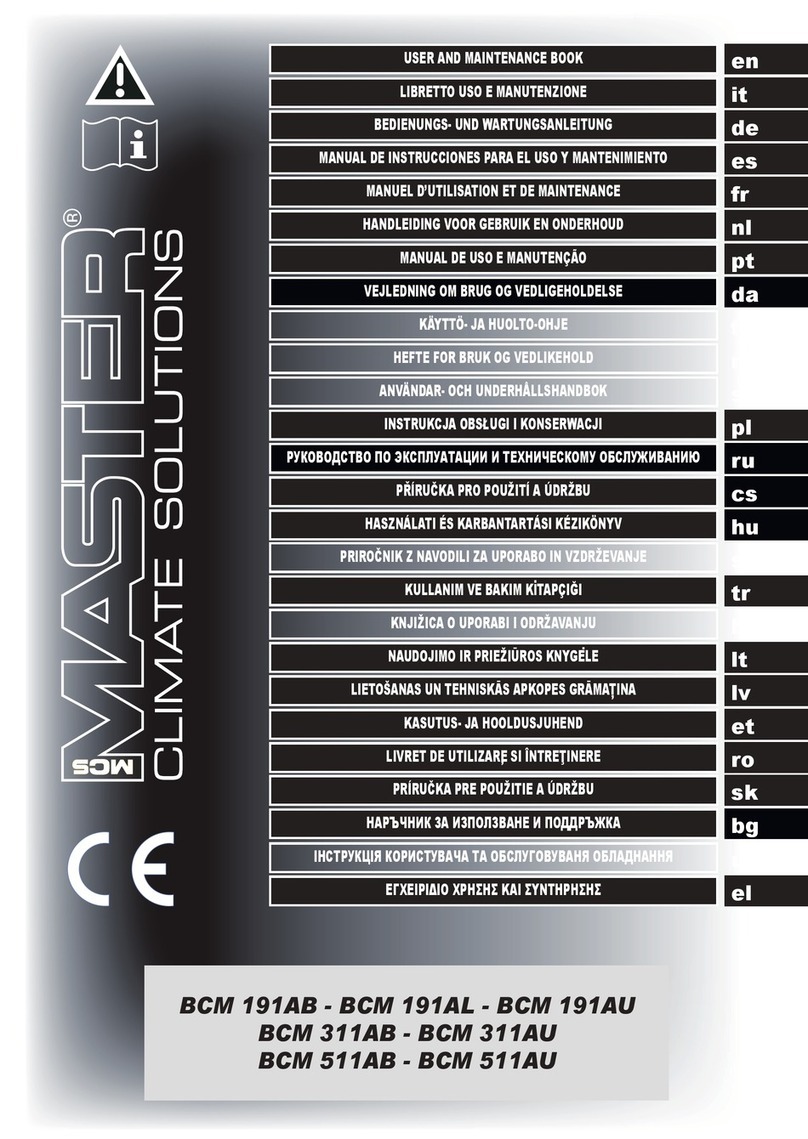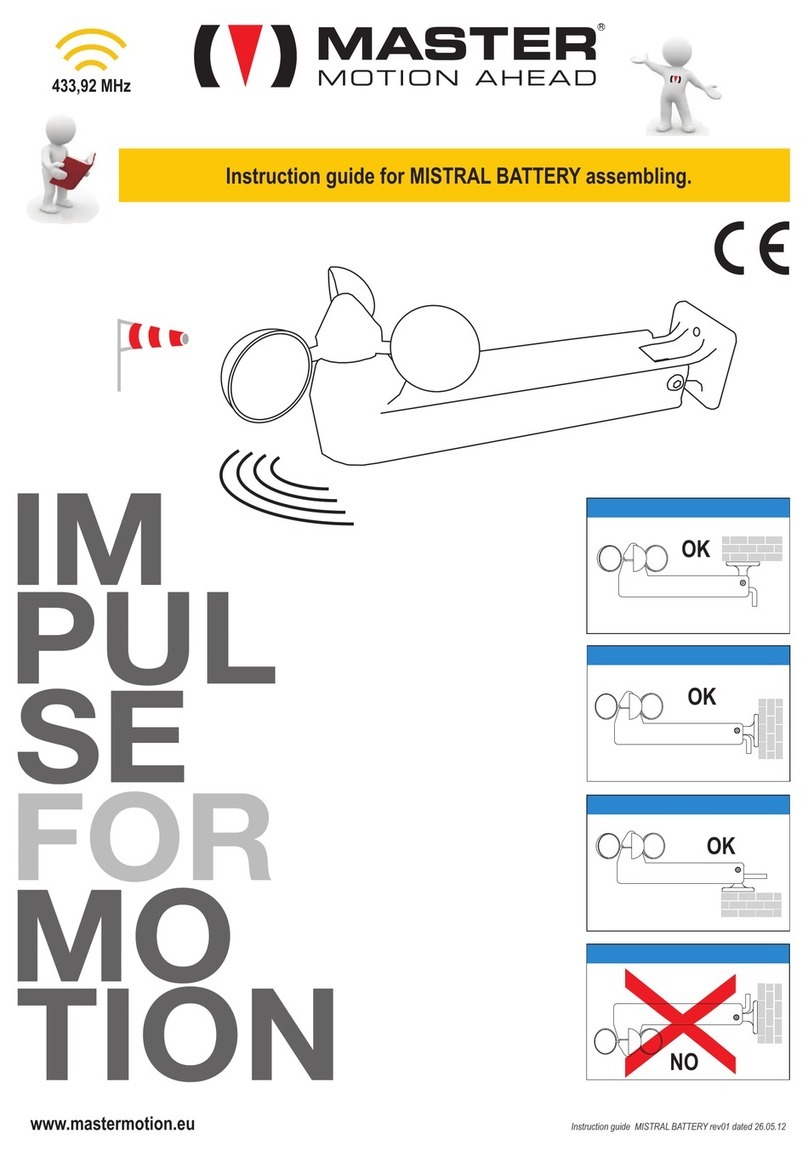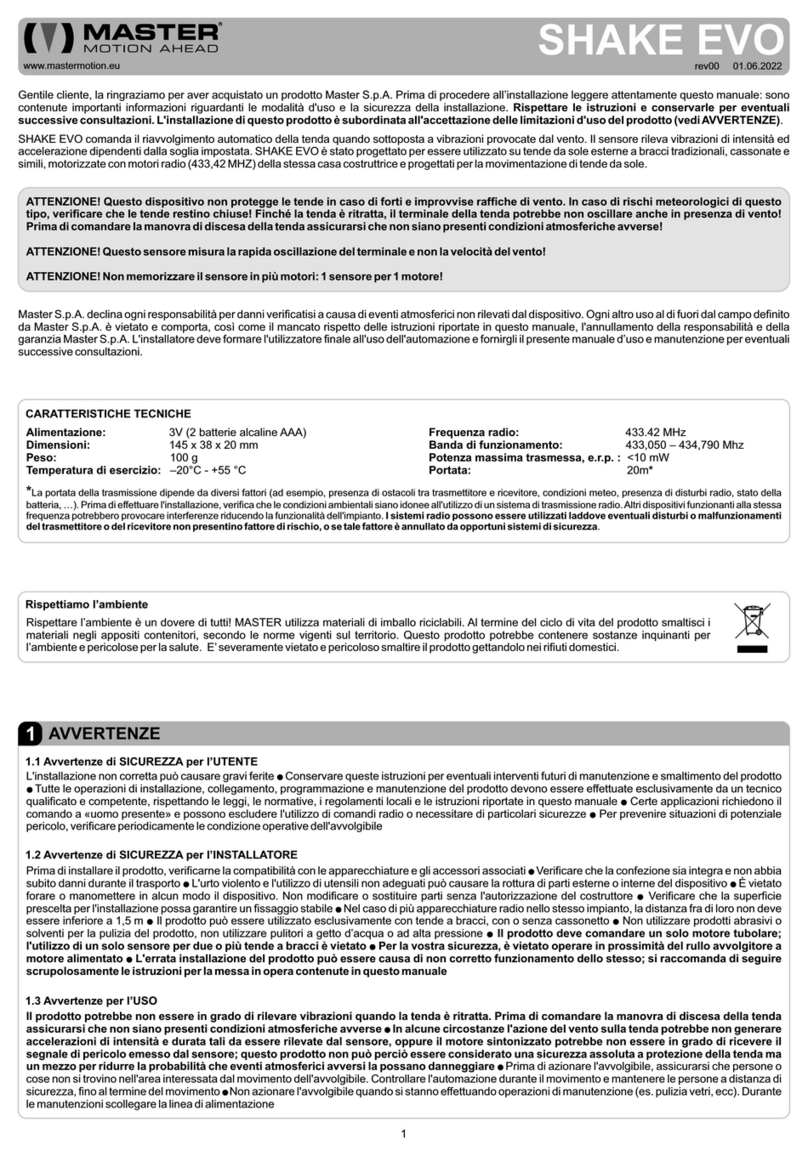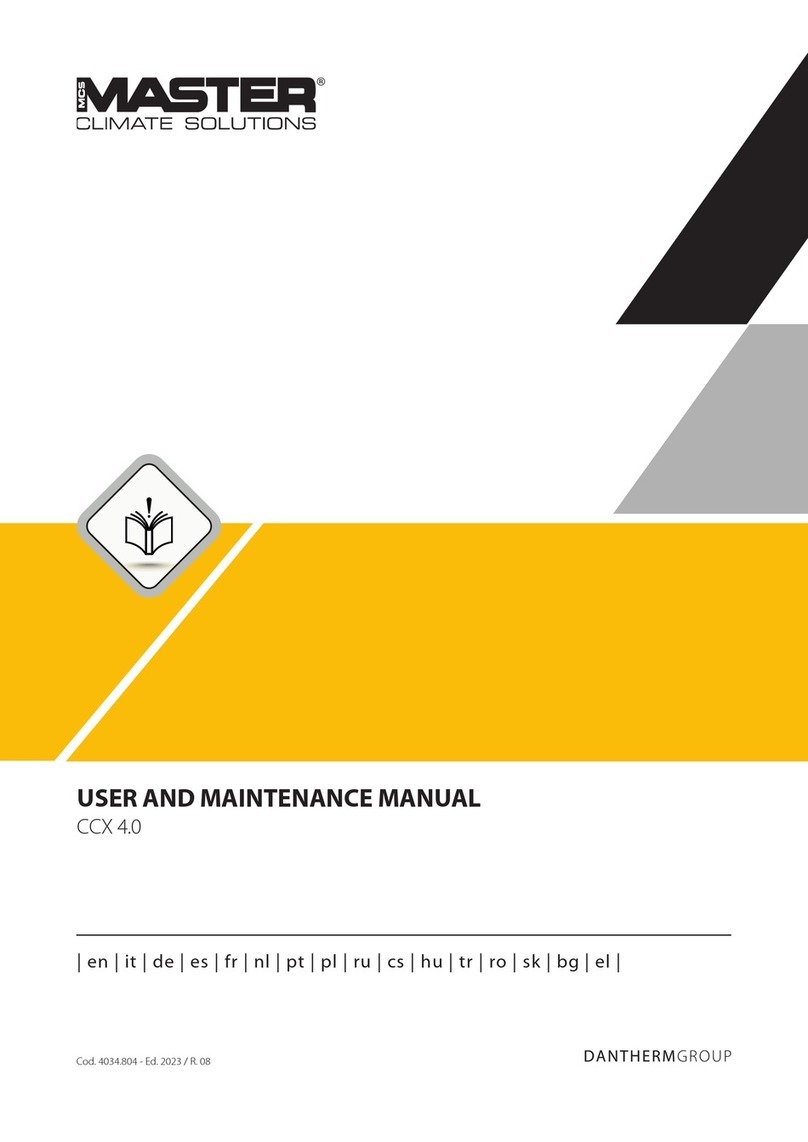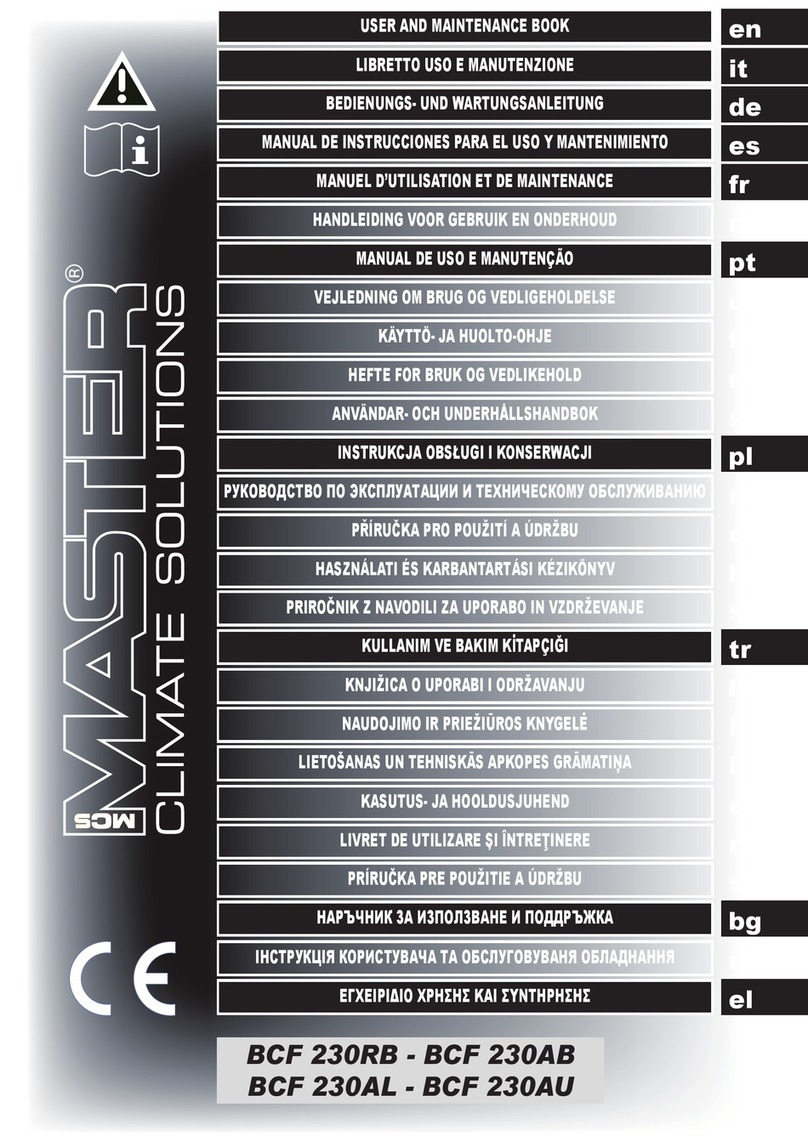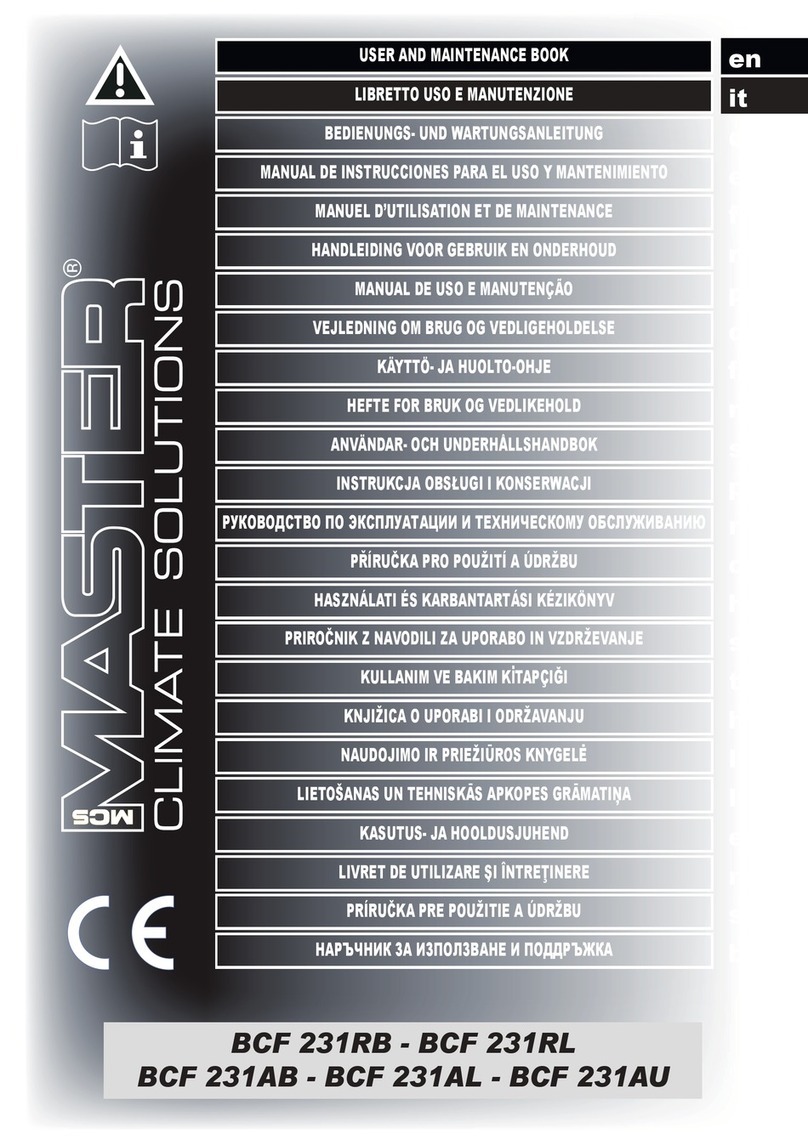
Questo dispositivo non protegge le tende in caso di forti e improvvise raffiche di vento.
Gentile cliente, la ringraziamo per aver acquistato un prodotto Master S.p.A. Prima di procedere all’installazione leggere attentamente questo manuale. Il dispositivo è stato
progettato per il comando di motori tubolari con finecorsa meccanici alimentati alla tensione di rete per la movimentazione di tende da sole, tapparelle e simili. Ogni altro uso al di fuori
dal campo definito da Master S.p.A. è vietato e comporta, così come il mancato rispetto delle istruzioni riportate in questo manuale, l'annullamento della responsabilità e della
garanzia Master S.p.A. L'installatore deve formare l'utilizzatore finale all'uso dell'automazione e fornirgli il presente manuale d’uso e manutenzione per eventuali successive
consultazioni.
In caso di rischi meteorologici di questo tipo, verificare che le tende restino chiuse! Master S.p.A. declina ogni responsabilità per danni verificatisi a causa di eventi atmosferici non
rilevati dal dispositivo.
Rispettare l’ambiente è un dovere di tutti! MASTER utilizza materiali di imballo
riciclabili. Al termine del ciclo di vita del prodotto smaltisci i materiali negli appositi
contenitori, secondo le norme vigenti sul territorio. Questo prodotto potrebbe
contenere sostanze inquinanti per l’ambiente e pericolose per la salute. E’
severamente vietato e pericoloso smaltire il prodotto gettandolo nei rifiuti
domestici.
Rispettiamo l’ambiente
Soglia sole :(serie ZENITH) 1 klux - 45 klux
Alimentazione: 230 V~ 50 Hz
Grado di protezione: IPX4
Soglia vento: 10 km/h - 35 km/h
Temperatura di esercizio: –20°C - +55 °C
Portata max contatti: 1 x 2,6A / 2 x 2,6A
Peso: 200 g
Dimensioni: 236 x 54 x 73 mm
Caratteristiche tecniche
Effettuare i collegamenti in assenza di alimentazione Verificare che la linea di alimentazione non dipenda da circuiti elettrici destinati all’illuminazione Collegare sempre il motore
all'impianto di messa a terra (giallo/verde) Prevedere a monte della rete di alimentazione dell'automazione un dispositivo che assicuri la disconnessione completa onnipolare dalla
rete, con una distanza di apertura dei contatti in ciascun polo di almeno 3 mm. Tale dispositivo deve essere installato conformemente alle regole di installazione e deve essere collegato
direttamente ai morsetti di alimentazione Il prodotto non prevede alcuna protezione contro sovraccarichi o cortocircuiti. Prevedere sulla linea di alimentazione una protezione
adeguata al carico, ad esempio un fusibile di valore massimo 3,15 A (per GHIBLI e ZENITH) o 6,3A (per GHIBLI DUO e ZENITH DUO) La sezione dei cavi di collegamento deve
essere proporzionata alla lunghezza degli stessi ed all’assorbimento del carico, ed in ogni caso non inferiore ad 1,5 mm
● ●
●
●
●
●Utilizzare pulsanti di comando a posizioni momentanee
(a “uomo presente”), NON utilizzare deviatori a posizione mantenuta I pulsanti di comando sono connessi alla tensione di rete e quindi devono essere adeguatamente isolati e
protetti.
●
02. COLLEGAMENTI ELETTRICI
GHIBLI 2019
GHIBLI Duo 2019
centrale vento per 1 motore - 2 motori
ZENITH 2019
ZENITH Duo 2019
centrale sole/vento per 1 motore - 2 motori
rev05.3 27.05.2021
R
01. MONTAGGIO
L'installazione non corretta può causare gravi ferite Conservare queste istruzioni per eventuali interventi futuri di manutenzione e smaltimento del prodotto Tutte le operazioni di
installazione, collegamento, programmazione e manutenzione del prodotto devono essere effettuate esclusivamente da un tecnico qualificato e competente, rispettando le leggi, le
normative, i regolamenti locali e le istruzioni riportate in questo manuale Il cablaggio elettrico deve rispettare le norme CEI in vigore. La realizzazione dell'impianto elettrico definitivo è
riservato, secondo le disposizioni del D.M. 37/2008, esclusivamente all'elettricista Certe applicazioni richiedono il comando a «uomo presente» e possono escludere l'utilizzo di
comandi radio o necessitare di particolari sicurezze Per prevenire situazioni di potenziale pericolo, verificare periodicamente le condizione operative dell'avvolgibile
● ●
●
●
●
01.1 Avvertenze per la sicurezza
Leggere i dati tecnici riportati nel paragrafo “Caratteristiche tecniche” per valutare i limiti d'impiego del prodotto Prima di
installare il prodotto, verificarne la compatibilità con le apparecchiature e gli accessori associati Il motore collegato al
dispositivo deve essere del tipo a “finecorsa meccanici”, senza alcuna elettronica di controllo; il motore deve essere di potenza
adeguata al carico applicato (verificare i dati di targa riportati sul motore) Verificare che la confezione sia integra e non abbia
subito danni durante il trasporto L'urto violento e l'utilizzo di utensili non adeguati può causare la rottura di parti esterne o interne
del dispositivo È vietato forare o manomettere in alcun modo il dispositivo. Non modificare o sostituire parti senza
l'autorizzazione del costruttore Verificare che la superficie prescelta per l'installazione sia di materiale solido e possa garantire
un fissaggio stabile Installare il prodotto con le palette rivolte verso il basso e con il corpo del sensore orizzontale (l'uso di una
livella a bolla facilita l'operazione, l'attacco a muro basculante con angolo ±90° consente di fissare il sensore anche su strutture
non verticali) Il prodotto deve essere installato ben esposto al sole-vento, lontano da fonti di calore (es: canne fumarie), lontano
da ostacoli che possono interferire con il movimento delle palette Il cavo di alimentazione deve essere posizionato in modo tale
da non entrare in contatto con parti in movimento Non utilizzare prodotti abrasivi o solventi per la pulizia del prodotto, non
utilizzare pulitori a getto d’acqua o ad alta pressione Per la vostra sicurezza, è vietato operare in prossimità del rullo avvolgitore
a motore alimentato
●
●
●
●
●
●
●
●
●
●
●
Il prodotto non è destinato ad essere usato da persone (bambini compresi) le cui capacità fisiche, sensoriali o mentali siano
ridotte, oppure con mancanza di esperienza o di conoscenza, a meno che esse non abbiano potuto beneficiare, attraverso
l'intermediazione di una persona responsabile della loro sicurezza, di una sorveglianza o di istruzioni riguardanti l'uso del
prodotto Prima di azionare l'avvolgibile, assicurarsi che persone o cose non si trovino nell'area interessata dal movimento
dell'avvolgibile. Controllare l'automazione durante il movimento e mantenere le persone a distanza di sicurezza, fino al termine
del movimento Non permettere ai bambini di giocare con l'apparecchio e con i dispositivi di comando Non azionare
l'avvolgibile quando si stanno effettuando operazioni di manutenzione (es. pulizia vetri, ecc). Durante le manutenzioni scollegare
la linea di alimentazione
●
● ●
01.2 Avvertenze per l’installazione
01.3 Avvertenze per l’uso
MASTER S.p.A. via Pertini 3, 30030 Martellago (VE)
X
ATTENZIONE:
Installare il prodotto in orizzontale e con le
palette rivolte verso il basso
Funzionamento e Grado di protezione IP non
sono garantiti se il montaggio non avviene
secondo le indicazioni date
Nello scegliere la zona a cui fissare la centralina,
tenere conto che il sensore utilizzato nei modelli
ZENITH è sensibile alla luce solare: per
funzionare correttamente deve essere colpito dai
raggi solari; la sola luce non è sufficiente.
Indicazione per modelli ZENITH
Fissare il supporto con i
tasselli e le viti in
dotazione
A
Inserire il corpo sul
supporto e in
posizione orizzontale
chiudendo saldamente
le due viti laterali
bloccare
B
Applicare gli appositi
coperchi sulle due viti
laterali
C
Aprire il coperchio
sotto il sensore
D
Connettere il cavo in
dotazione: controllare
che il connettore sia
ben agganciato
E
Bloccare il cavo
utilizzando il ferma
cavo in dotazione
F
Chiudere il coperchio,
controllando che sia a
filo con il resto
dell’involucro
G
01.4 Montaggio
(1)
(1)ATTENZIONE: queste viti non devono mai essere svitate completamente.
Click!
